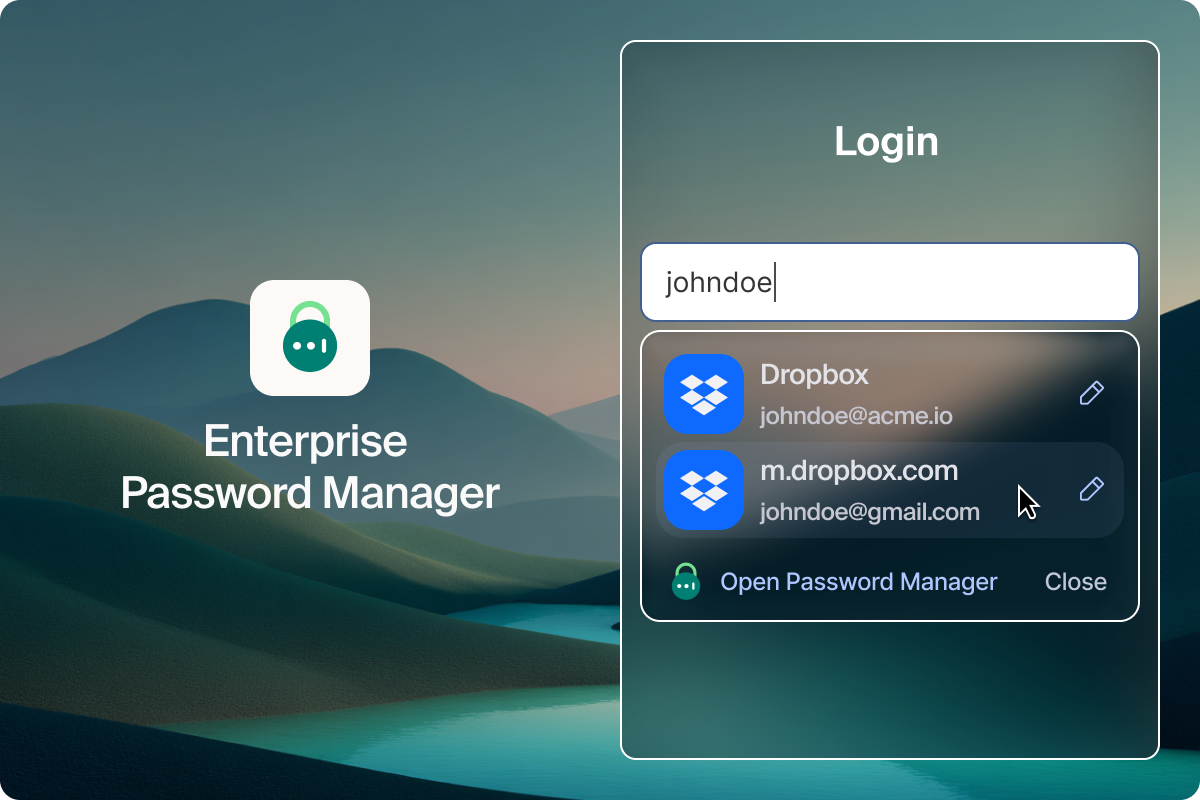VDI Reduction: Strategies for Enterprise IT Teams
VDI was a transformational technology when it was first introduced 25 years ago. Since then, endpoints are far more powerful and reliable, applications moved to the cloud, and the nature of the workplace fundamentally changed. Today, it’s time to consider a modern alternative to redefine workplace efficiency.
.avif)
Virtual Desktop Infrastructure (VDI) explained
A virtual desktop interface allows people to interact with a virtualized OS and applications hosted on a remote server rather than on the local machine. This setup enables users to access their desktop and applications from any device with internet connectivity.
Virtual Desktop Infrastructure, or VDI, refers to the technology used to host and manage virtual desktops. VDI hosts desktop environments on a centralized server and serves them to end-users over a network. This model enables centralized management of various virtual desktops, which can be tailored to individual users, with data and applications residing on the servers rather than the endpoint.
How VDI Works
When a user logs in, the VDI system assigns a virtual desktop from the pool of VMs, connecting them through a thin client or a web browser on the endpoint. The user interacts with this virtual desktop as if running on their local machine, though all processing and data storage happen on the server.
The downside of VDI
In most organizations, we see 80–90% of the applications being used are web-based external or internal applications. The substantial overhead of VDI just to launch a web browser and connect to SaaS or web applications is a poor trade-off for users and IT budget holders. Sure, VDI may be valuable for certain situational needs. But if an organization can reduce its dependency — and subsequent cost — of VDI by 80% or more, it seems foolish not to consider. Even if the reduction is only, say, 50%, that can be a huge win for the organization.
Most importantly, to allow such a small footprint of resources to negatively impact the user experience for everyone needing application access is simply unnecessary. This is particularly true given not all users use or need VDI in the same ways, so even targeted reductions or eliminations can be very valuable. In the eyes of most practitioners who live with this frustration every day, a transformational change is needed.
That’s not to say that desktop virtualization could or should go away tomorrow. However, it is clear that organizations and users are hungry for avenues that help them reduce their dependency upon such application delivery experiences. That’s where enterprise browsers come in.
How to mitigate and eliminate VDI expenses with an enterprise browser
Enterprise Browsers present a user-friendly, lightweight option while still meeting the needs of most enterprises.
By delivering and securing applications directly through the browser, an enterprise browser significantly reduces the infrastructure complexity and costs associated with traditional VDI deployments.
Infrastructure
Traditional VDI requires robust server infrastructure to host desktop images and applications. Plus, to manage the connections and maintain availability and performance, VDI solutions often require sophisticated load balancers. And in persistent VDI environments, the storage costs can be immense.
These influences, while critical, add to the complexity and cost of VDI. An enterprise browser shifts the workload to the last mile within the browser on the endpoint, reducing the need for virtualization infrastructure.
Energy efficiency
VDI requires energy-intensive infrastructure that comes with a large carbon footprint. These are direct energy costs that cloud providers pass along in their subscription fees. Shifting workflows to web technologies via an enterprise browser as the client directly reduces infrastructure usage and, as a result, reduces energy demand and helps organizations meet their sustainability goals.
Maintenance and administration
Maintaining VDI can be costly due to the need for extensive infrastructure maintenance and VDI administration — including patch management, hardware upgrades, and support for end-user issues.
An enterprise browser eliminates maintenance costs associated with traditional VDI systems because it requires no additional hardware. It also lowers administrative costs by centralizing controls within the browser, reducing the need for multiple security tools and streamlining policy management.
Licensing costs
VDI solutions and their backend systems can have substantial licensing fees. This includes the VDI platform and any extra licenses for the operating systems and apps used in VDI sessions, and these subscription costs only continue to grow. An enterprise browser can reduce the need for VDI by 80-90%, saving money on licensing costs.
Endpoint controls and management
Ensuring secure and compliant endpoint interactions within a VDI session often necessitates additional endpoint controls and management solutions. These solutions require their own licenses, infrastructure, and administrative overhead. By reducing the number of virtual desktops in your environment, you will directly reduce the number of agents and management tools deployed to those virtual desktops.
Other VDI reduction strategies to consider
While transitioning to an enterprise browser can significantly reduce VDI dependency, it’s not the only path forward. Here are three other approaches to consider when looking to reduce your VDI costs.
VDI Optimization and Rightsizing
Organizations can reduce their VDI costs by optimizing their existing VDI infrastructure in a few ways:
- Optimizing VM templates to ensure virtual machines are provisioned with only the necessary resources.
- Rightsizing resource allocation based on actual usage patterns which helps avoid over-provisioning and underutilization.
- Implementing performance monitoring tools to identify inefficiencies and streamline operations.
Application Virtualization
As an alternative to full desktop virtualization, application virtualization is a viable option. Application virtualization enables individual applications to be accessed remotely, as opposed to an entire desktop. This approach reduces the overhead costs of virtualization, simplifies management, and enhances flexibility by allowing users to access critical tools without the need for a full VDI stack.
User Segmentation and Access Simplification
Not all users need VDI. By carefully segmenting your workforce, you can identify users who genuinely need full Desktop VDI access and who can still complete their work with simpler access methods such as web-based or virtualized applications.
The enterprise browser: a modern way to reduce VDI
The inherent challenges with desktop virtualization stem from the very thing that made it appealing in the first place: a safe way to give audiences access to critical applications they need. At the time, there were IT and security benefits to moving the computing layer to the cloud or on-premise servers.
But end users paid the cost with unavoidable latency and performance penalties. The solution to this dilemma is to shift as much compute back to the endpoint as possible, and restore a natural end-user experience, all while delivering applications safely to the appropriate audiences.
Today, we have an alternative to desktop virtualization that does just that.
- Secure application access. If the primary requirement is to provide employees with a secure and controlled environment for accessing web-based applications (internal or external), along with command line needs, or remote desktop needs for the applications where it’s required, an enterprise browser is a fitting choice.
- Endpoint security enhancement. Organizations looking to enhance endpoint security by protecting users, applications, and devices from potential threats can benefit from an enterprise browser.
- BYOD policies. In environments where employees use personal devices for work, an enterprise browser can offer an application delivery experience without the invasiveness of other technologies. They balance the need for privacy on personal devices, allowing the user to continue using their browser of choice for personal and non-critical work needs. Most importantly, it can ensure protection for the organization’s key applications and data at the time of engagement.
- Compliance requirements. Industries with strict regulatory requirements, like finance and healthcare, can deploy enterprise browsers to secure application access and comply with industry regulations. The audit perspective from the physical position of the browser at the presentation layer is exceptionally rich and highly unique.
- Resource-constrained environments. In situations where deploying virtual desktops might be resource-intensive, using an enterprise browser on existing devices can be a more practical solution.
- Single client experience. In situations where you may still require VDI for a specific application need, the Enterprise Browser can be the singular client for web application access and for rendering VDI needs via web streaming within the browser. Given that all major VDI players support this today, it can be your single natural interface to all applications.
The Island approach to enterprise browsers
Island's Enterprise Browser offers a compelling alternative to virtual desktops by providing robust, built-in protections against common web threats, advanced data control capabilities, and streamlined management tools that are easy for IT teams to deploy and maintain.
No backhauling traffic. No servers to maintain. No frustrated end users. At a fraction of the cost. All built into a Chromium-based browser end users can deploy and use with zero training. Island simplifies administration and delivers a smoother, faster, and more secure user experience, tailored to meet the demanding needs of modern enterprises.
The right choice for you
Ultimately, the right solution is the one that allows you and your IT team to work smarter, not harder. Whether you want to empower a third-party business process outsourcer to function as your call center, significantly simplify your contractor onboarding process, or enable a fully secure BYOD program, the Enterprise Browser can help you reduce your dependency on VDI while fully balancing security and productivity with a vastly better user experience.
FAQs about VDI reduction
Why is reducing reliance on traditional VDI becoming a priority for enterprises?
Traditional Virtual Desktop Infrastructure often introduces substantial overhead, leading to higher operational costs and a poor user experience, especially for web-based applications. The complexity of managing VDI infrastructure, including maintenance, licensing, and administration, consumes significant IT resources. Many organizations find that the benefits of full desktop virtualization are outweighed by these challenges for the majority of their workforce.
How can an enterprise browser significantly cut VDI-related costs?
Enterprise browsers reduce the need for extensive VDI infrastructure by shifting workloads to the endpoint browser, thereby lowering server, storage, and energy costs. They streamline maintenance and administration by centralizing controls and reducing the need for multiple security tools. This approach also leads to considerable savings on VDI platform and operating system licensing fees by minimizing the number of virtual desktops required.
What security advantages do enterprise browsers offer over traditional VDI?
Enterprise browsers provide robust, built-in protections and advanced data control capabilities directly within the browser where most work happens. They enhance endpoint security by enforcing granular policies at the application level and securing the "last mile" of interaction, protecting against threats like data exfiltration and unauthorized access. This model isolates sensitive corporate data and applications from personal use on the same device.
In what common scenarios can an enterprise browser replace or complement VDI?
An enterprise browser is ideal for secure access to web-based applications, supporting Bring Your Own Device (BYOD) programs, and ensuring compliance with industry regulations. It offers a lightweight alternative for resource-constrained environments and can serve as a single client experience for both web applications and certain VDI needs via web streaming. This makes it suitable for roles like customer service, contractors, and general corporate users.
.svg)






.svg)
.svg)
